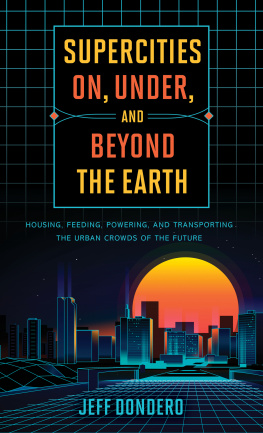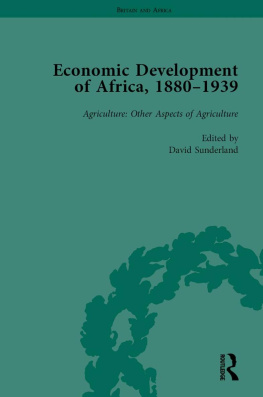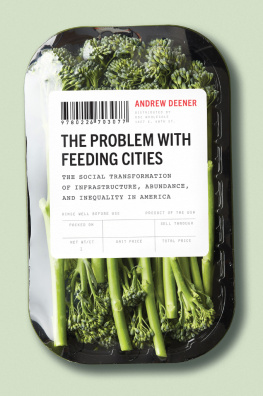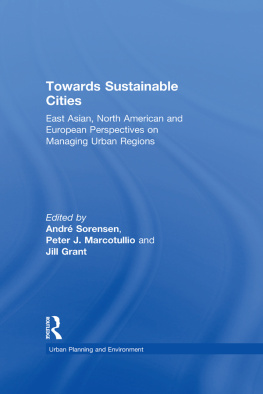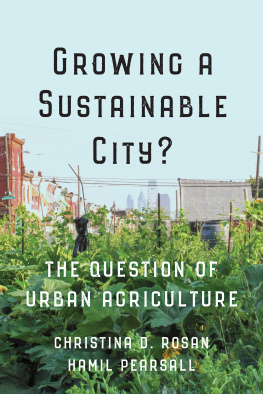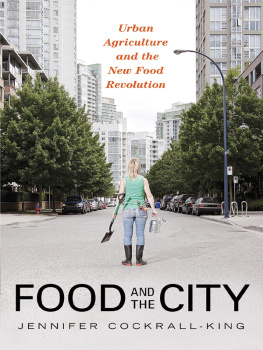Cover
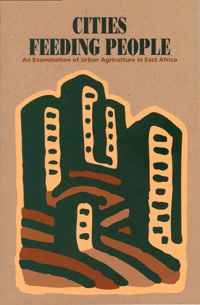
| title | : | Cities Feeding People : An Examination of Urban Agriculture in East Africa |
| author | : | Egziabher, Axumite G. |
| publisher | : | International Development Research Centre |
| isbn10 | asin | : | 088936706X |
| print isbn13 | : | 9780889367067 |
| ebook isbn13 | : | 9781552501092 |
| language | : | English |
| subject | Urban agriculture--Africa, East, Food supply--Africa, East. |
| publication date | : | 1994 |
| lcc | : | S494.5.U72C58 1994eb |
| ddc | : | 338.1/9676 |
| subject | : | Urban agriculture--Africa, East, Food supply--Africa, East. |
Page i
Cities
Feeding
People
Page ii
This page intentionally left blank.
Page iii
Cities Feeding People
An Examination of Urban Agriculturein East Africa
Axumite G. Egziabher; Diana Lee-Smith, Daniel G. Maxwell, Pyar Ali Memon, Luc J.A. Mougeot, and Camillus J. Sawio
International Development Research Centre
Ottawa Cairo Dakar Johannesburg Montevideo Nairobi New Delhi Singapore
Page iv
Published by the International Development Research Centre
PO Box 8500, Ottawa, ON, Canada KIG 3H9
International Development Research Centre 1994
Egziabher, A.G.
Lee-Smith, D.
Maxwell, D.G.
Memon, P.A.
Mougeot, L.J..A.
Sawio, C.J.
Cities feeding people: an examination of urban agriculture in East Africa.Ottawa, ON, IDRC, 1994. xiv + 146 p.: ill.
/Agriculture/, /farming/, /food production/, /towns/, /East Africa/,
/Tanzania/, /Uganda/, /Kenya/, /Ethiopia/, /case studies/, references.
UDC: 631(676-21)
ISBN: 0-88936-706-X
A microfiche edition is available.
All rights reserved. No part of this publication may be reproduced, stored ina retrieval system, or transmitted, in any form or by any means, electronic,mechanical, photocopying, or otherwise, without the prior permission of theInternational Development Research Centre.
Printed in Canada.
Page v
Contents
Foreword
Urban Agriculture is Already Feeding Cities | vii |
Irene Tinker |
Chapter 1. Introduction
African City Farming from a World Perspective | |
Luc J.A. Mougeot |
Chapter 2. Tanzania
Who Are the Farmers of Dar es Salaam? | |
Camillus J. Sawio |
Chapter 3. Uganda
The Household Logic of Urban Farming in Kampala | |
Daniel G. Maxwell |
Chapter 4. Kenya
Urban Agriculture in Kenya | |
Diana Lee-Smith and Pyar Ali Memon |
Chapter 5. Ethiopia
Urban Farming, Cooperatives, and the Urban Poor in Addis Ababa | |
Axumite G. Egziabher |
Chapter 6. Conclusion
Leading Urban Agriculture into the 21st Century:
Renewed Institutional Interest | |
Luc J.A. Mougeot |
Bibliography | |
Page vi
This page intentionally left blank.
Page vii
Foreword
Urban Agriculture is AlreadyFeeding Cities
Irene Tinker
Urban agriculture (UA) is wrongly considered an oxymoron. Despiteits critical role in producing food for city dwellers around the world,urban food production has largely been ignored by scholars andagricultural planners; government officials and policymakers at bestdismiss the activity as peripheral and at worst burn crops and evictfarmers, claiming that urban farms are not only unsightly but alsopromote pollution and illness. Contradicting this image, recent studiesdocument the commercial value of food produced in the urban areawhile underscoring the importance of urban farming as a survivalstrategy among the urban poor, especially women heads of households.
The International Development Research Centre (IDRC), with itsenviable perspicacity, became the first major international agency torecognize the importance of urban food production. In 1983, the urbansection of IDRC under Yue-man Yeung funded a study of six urbancentres in Kenya to be carried out by the Mazingira Institute of Nairobi.Additional studies and scholars have been supported over the lastdecade until the weight of reports and awareness of problems withurban food security has at last brought the issue to the forefront ofIDRCs agenda. In the spring of 1993, IDRC organized two eventsdesigned to propel this policy concern to a wider audience: a policy andplanning conference at the Ottawa headquarters and panels at the
Professor in the Department of City and Regional Planning and Chair of the Departmentof Womens Studies at the University of California, Berkeley, CA, USA.
Page viii
annual meeting of the Canadian Association for African Studies(CAAS), held in Toronto.
The decision to organize panels at the CAAS conference with its themeof Urban and Community Development was logical. Africa south ofthe Sahara is the only part of the world where per-capita foodproduction has fallen during the past decade. Inadequate rural foodsupplies are exacerbated by pressures of structural adjustment thatreduce urban employment; the fall in prices of export crops bothencourages urban migration and reduces the governments ability topurchase food stocks due to inadequate foreign exchange earnings.World food emergency supplies are currently under stress as demandgrows as a result of widespread famine and war. Changingconsumption patterns in the cities provide opportunities for commercialgrowing of foods not typically grown in rural areas, particularlyvegetables. Together, these trends help explain the expansion of urbanfood production throughout the region.
The CAAS panels brought together scholars studying UA in Ethiopia,Kenya, Mali, Tanzania, and Uganda to discuss their research. Thestudies done by Axumite Egziabher in Addis Ababa, Camillus Sawio inDar es Salaam, and Daniel Maxwell in Kampala are based on theirdoctoral dissertations. Each focuses on a particular aspect of UA.Egziabher completed an intensive study of a cooperative that isgrowing vegetables commercially. Sawio collected data on socioeconomic characteristics of urban farmers in both squatter and legalresidential areas. Maxwell is particularly concerned with the interplayof land rights, size and location of the farms, type of food produced,and characteristics of the farmers. The research in both Kenya andMali, which emphasized the interrelationships of urban food productionand cooking fuel, were funded by IDRC through the Mazingira Institutein Nairobi and the ENDA nergie (Environnement et dveloppementdu Tiers-Monde) in Dakar and carried out by a team.
For a contrasting practical view, an official of the Organization ofCollective Cooperatives in Zimbabwe was invited to discuss real-timeissues of UA in his country. To provide an international perspective,papers on Bolivia and China were also presented. The four papers onEast Africa are presented in this publication; policy aspects of the
Next page

